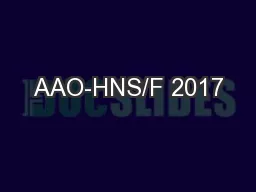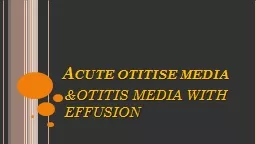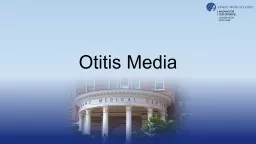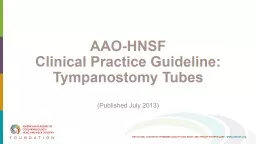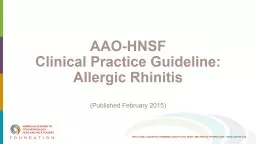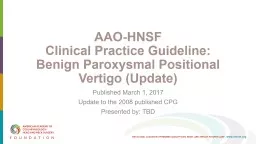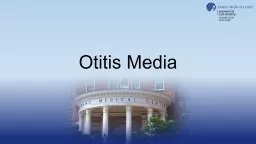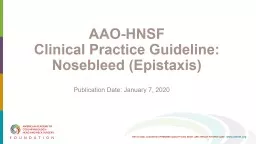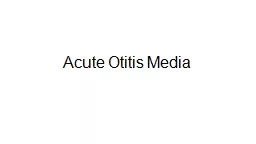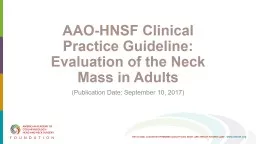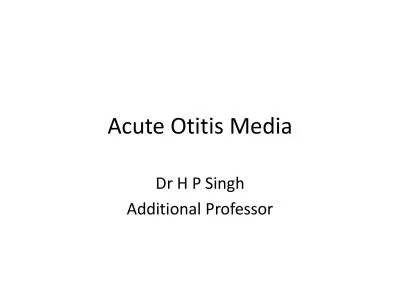PPT-AAO-HNSF Clinical Practice Guideline: Otitis Media with Effusion
Author : phoebe-click | Published Date : 2020-04-10
Published February 2016 Update to 2004 published CPG Disclaimer The clinical practice guideline is not intended as the sole source of guidance in managing patients
Presentation Embed Code
Download Presentation
Download Presentation The PPT/PDF document " AAO-HNSF Clinical Practice Guideline: O..." is the property of its rightful owner. Permission is granted to download and print the materials on this website for personal, non-commercial use only, and to display it on your personal computer provided you do not modify the materials and that you retain all copyright notices contained in the materials. By downloading content from our website, you accept the terms of this agreement.
AAO-HNSF Clinical Practice Guideline: Otitis Media with Effusion: Transcript
Download Rules Of Document
" AAO-HNSF Clinical Practice Guideline: Otitis Media with Effusion"The content belongs to its owner. You may download and print it for personal use, without modification, and keep all copyright notices. By downloading, you agree to these terms.
Related Documents


